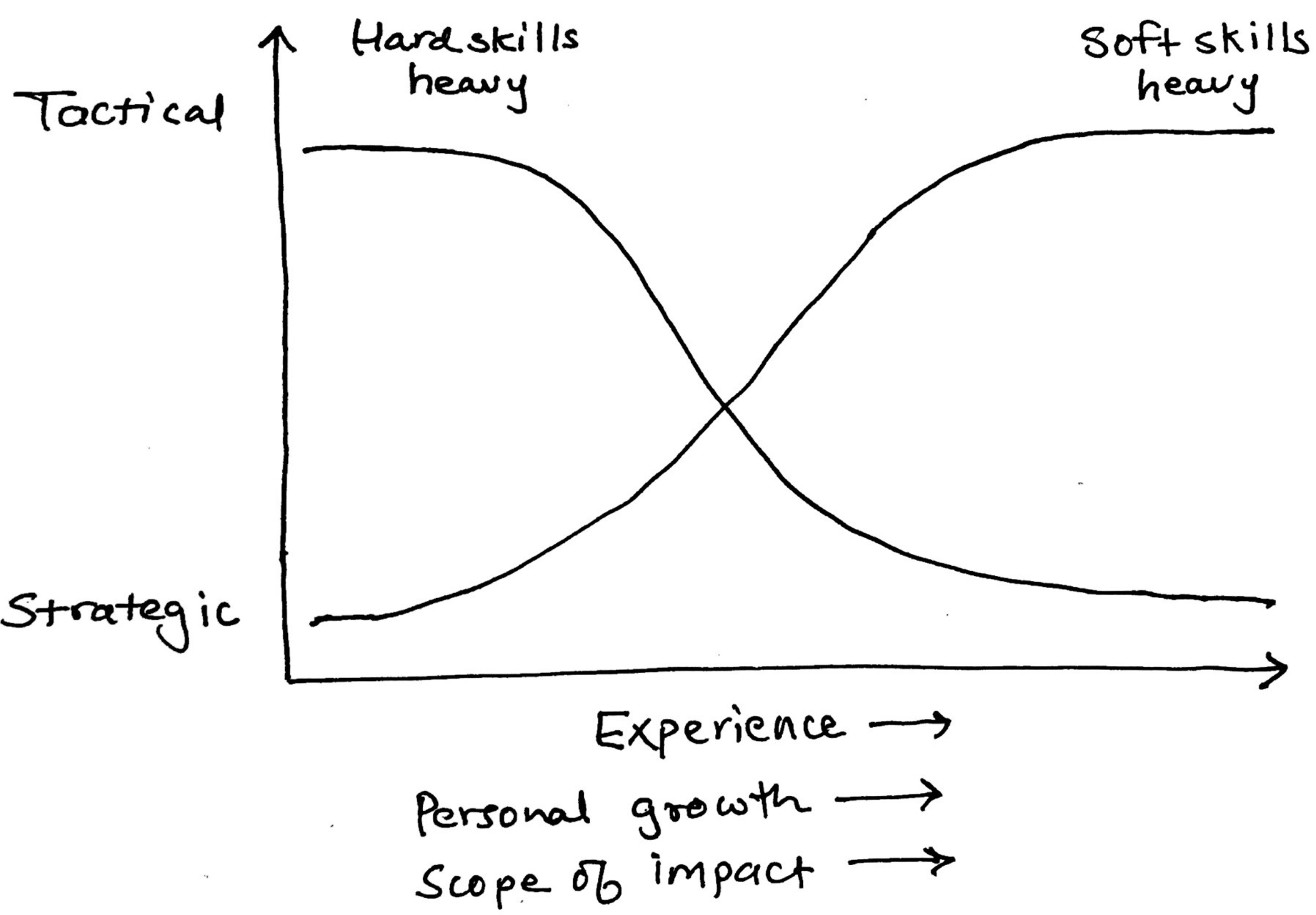Two Lane Theory
Triaging your work is one of the most important skills that can meaningfully improve your quality of life at work while still ensuring a consistent high quality throughput and impact.
Triaging has its roots in a strong understanding of prioritization and what truly matters at a given instance. I’m sure we’ve all been in situations where we have a lot of work on our plate and there’s more coming week over week.
I developed a basic framework that helps me triage the incoming and ongoing work better and helps set the right expectations with the people I work with.
The framework is predicated on the fact that as you take on more, you need to get comfortable with the fact that you will not be able to and won’t need to exceptionally nail everything you take on. It’s physically impossible. Exceptional output is expensive and time is the cost. And by now you don’t need me to tell you that you can easily identify current projects on your plate where you don’t really need to be exceptional, you just need to keep the ship afloat.
That’s what triaging is: Separating out projects that have a strong correlation between the time you give (T) and the impact you gain, from the projects that don’t.
Example: “If I spend 2 more days on this, would it significantly improve its adoption by users? Would it justifiably move the needle that much more?”
Before we dive into triaging, it’s good to list some precursors that are generally true and apply widely –
A few precursors
- Your individual bandwidth is finite, and so is the total collective bandwidth of the team
- Pushing back on made-up projects and half-assed work is justified and okay
- Not all work is important, not all work is urgent
- Not all work requires deep-thinking or a very rigorous and methodical approach
The two lanes
Keeping in mind the precursors, I have a simple way to triage all the work I am doing into 2 separate lanes depending on some high-level characteristics of the work:
- ⚡️ Tactical lane: This is the fast lane where the work has well-known and widely understood requirements that need to be executed upon quickly (and often dirtily), often with some amount of repetition. E.g.: That email template design, the final testing of a feature pre-launch, a quick mock for en experiment the PM wants to run, a couple of exploratory mocks for a leadership presentation, and so on…
- Project has very few / no unknowns and is largely well-defined
- Project requires little to no research to answer open questions
- Project is relatively low stakes
- Project already has stakeholder alignment
- 🐢 Strategic lane: This is the slow lane where the work is more ambiguous with the problem statement often needing to be scoped first before solutioning, then laying out a thoughtful and scalable solution path and all of this often without any tangible design output in the traditional sense (you might not have/need mocks for projects in this lane). E.g.: A checkout & partial payment flow, comms & outreach framework for all user touch-points, information architecture of your new mobile product, and so on…
- Project has known & unknown unknowns and is more open ended in scope
- Project has important open questions that need research
- Project is potentially high stakes
- Project would require internal alignment down the line once it gains clarity and as the scope firms up
Do you notice how different both of these lanes are?
The Tactical lane demands speed and efficiency in your execution, whereas the Strategic lane demands quality and robustness in your thinking.
If you’re quick with the Tactical lane (some of that could even be automated), you can use the remaining time to decompress and slow-think in the Strategic lane.
To demonstrate the diversity of skills, you need a healthy balance of both: one shows breadth and the other, depth.
In order to put this into practice, you’d need to start thinking about making changes in the way you work. I do have a helpful summary for what you can do in the short-term.
Evolution of work over your career

As you grow more in your career, you can expect to be given a bigger scope of work that comes with more ambiguity and a larger potential for impact. Keep a pulse check on the nature of work you’re getting and strive to move further along the curve.
Prioritizing your micro-time
I’ll say this about your time at work: You are your calendar. What you choose to spend time on over the week is a representation of your priorities. A cursory glance would tell you if you’re spending too much time in the Tactical lane.
Spending majority of your time in the Tactical lane is a recipe for burnout.
What you want is a healthy balance of both lanes so that it leaves ample time for you to slow down and think. The Strategic lane is all about thinking more and doing less. It is slow by design.
If your current work setup doesn’t leave enough room in a week to spend a few hours in the Strategic lane, have a conversation about that with your manager.
The macro-time plan
The long-term evolution of this balance goes to determine the career trajectory you’d have. Ideally, you’d benefit by moving toward a Strategy-heavy charter as years pass by in your career. You want to maximise impact by working on bigger and more high-level projects instead of focusing on the repetitive tactical work you began your career with.